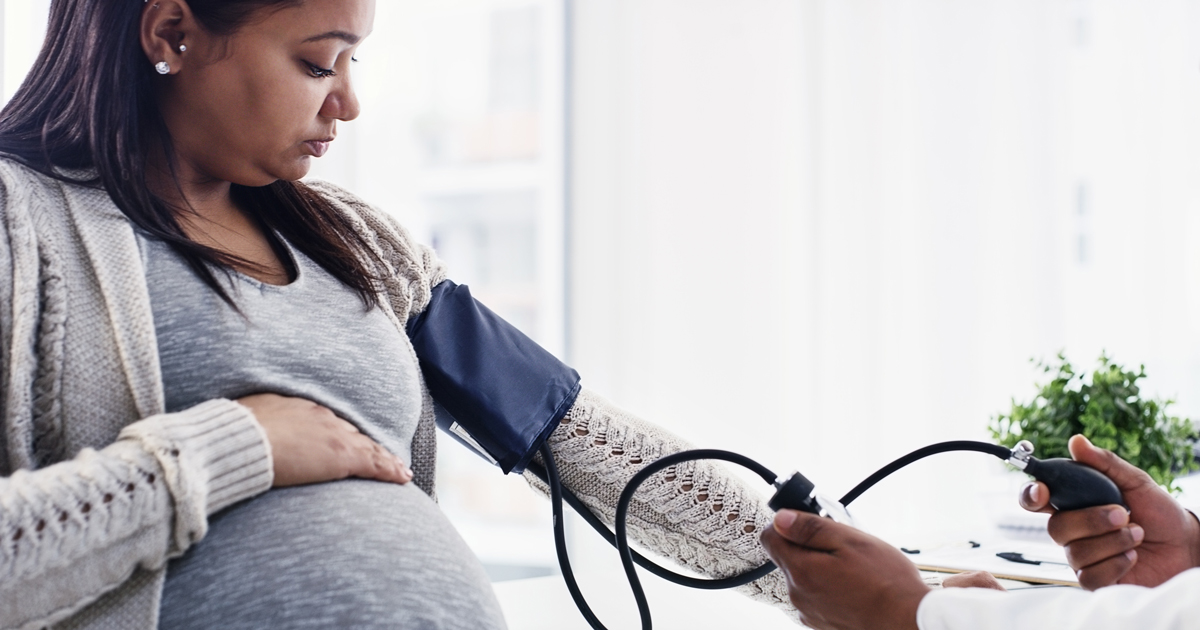Understanding preeclampsia: Risk factors, symptoms and treatment

Preeclampsia is a disease you can only get while pregnant. It typically occurs after 20 weeks of pregnancy. Preeclampsia can result in serious complications including liver or kidney failure, seizures and blood clotting problems if left untreated. In severe cases, it can lead to maternal and infant death.
What causes preeclampsia?
Preeclampsia is thought to be caused by the placenta, but the exact mechanism is unknown. "Typically, we see an increase in the resistance of blood flow from the placenta to the baby," explains Nebraska Medicine OB-GYN Carly Jennings, MD. "This can cause fetal growth restriction, abnormal blood flow through the placenta and preterm delivery."
Certain conditions can put patients at higher risk for developing preeclampsia, including:
- Being pregnant with multiples
- Advanced maternal age (35 years or older)
- African American race
- First pregnancies
- Chronic hypertension
- Pregestational diabetes
- Assisted reproductive technologies
What are the symptoms of preeclampsia?
People with preeclampsia often have high blood pressure (greater than 140/90). They may also have high protein levels in their urine, which is a sign of kidney dysfunction. Gestational hypertension is when you have high blood pressure but no protein in your urine.
"Preeclampsia can be thought of as a leaky vessel disease, which is why you can see certain symptoms in the mother," explains Dr. Jennings. "Increased lower extremity swelling can be common, but you can also see swelling in other places like the abdomen or hands."
Other signs of preeclampsia include:
- Headache that does not resolve with acetaminophen
- Vision changes (spots, floaters, light sensitivity)
- Severe right upper quadrant pain
- Extreme swelling (edema) in your hands and face
Sometimes, preeclampsia has no symptoms. You may not know you have it until your doctor checks your blood pressure and urine during your prenatal appointment. Be sure to discuss any symptoms you have with your doctor.
What's the difference between preeclampsia, eclampsia and postpartum preeclampsia?
Eclampsia is severe preeclampsia that causes seizures. It's considered a complication of preeclampsia, but it can occur even if you haven't been diagnosed. In rare cases, eclampsia can lead to coma, stroke or death.
Postpartum preeclampsia occurs after delivery. Symptoms usually begin within a few days to one week after delivery. In rare cases, preeclampsia can start weeks after delivery.
What is the treatment for preeclampsia?
Your doctor will recommend treatment based on how severe your preeclampsia is and how far along you are in your pregnancy. If you have gestational hypertension or preeclampsia without severe features, your doctor will monitor you closely through outpatient appointments. Often, you will be able to carry your baby to term, delivering at 37 weeks. However, if fetal growth is restricted with abnormal blood flow, your doctor may recommend early delivery.
"If you have preeclampsia with severe features, you will be admitted to the hospital for close monitoring of blood pressure, labs and fetal well-being until delivery at 34 weeks," said Dr. Jennings. "However, the baby may be delivered before 34 weeks if needed to support the well-being of mother or baby."
During labor and following delivery, you may be given magnesium intravenously to prevent the development of seizures. In most cases, delivery of the baby and the placenta will resolve preeclampsia. However, your doctor will monitor you for several weeks to ensure your symptoms go away.
Why regular prenatal appointments are so important
When preeclampsia is caught early, it can be treated and managed to keep you and your baby safe and healthy. Call 800.922.0000 to schedule an appointment with one of our OB-GYN doctors.







